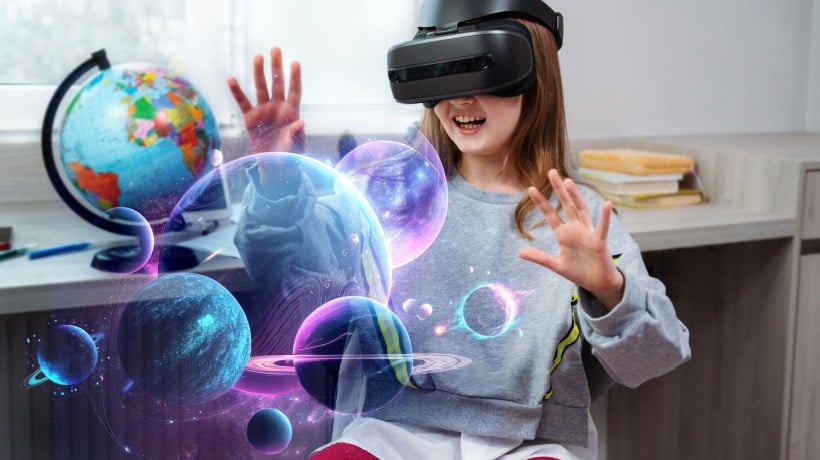Augmented Reality (AR) is rapidly transforming the landscape of education, offering innovative ways to enhance learning and engagement. By overlaying digital information onto the physical world, AR creates immersive experiences that can make complex concepts more accessible and engaging. This article explores how AR is being used in education, its benefits, and the potential challenges it presents.
Transformative Educational Applications
1. Interactive Learning
AR technology enables interactive learning experiences that can bring abstract concepts to life. For instance, students studying anatomy can use AR to visualize and explore 3D models of the human body, allowing them to see organs and systems in a more dynamic and detailed way than traditional textbooks or diagrams. Similarly, AR can turn historical events into interactive experiences, enabling students to “travel” to different time periods and witness historical events as if they were happening in real time.
2. Enhanced Engagement and Motivation
One of the key benefits of AR in education is its ability to boost student engagement and motivation. Traditional teaching methods can sometimes struggle to capture students’ attention, especially in subjects that may not immediately seem exciting. AR can make learning more captivating by integrating multimedia elements, such as animations, sounds, and interactive features. For example, AR applications can transform a simple math problem into a visual puzzle or game, making the learning process more enjoyable and engaging.
3. Personalized Learning
AR technology allows for personalized learning experiences tailored to individual student needs. Through AR applications, students can work at their own pace and receive immediate feedback on their progress. For example, AR-based language learning apps can provide real-time translations and pronunciation guides, helping students learn new languages more effectively. This personalized approach can address diverse learning styles and needs, making education more inclusive and effective.
4. Virtual Field Trips
AR can facilitate virtual field trips, allowing students to explore places they might not otherwise have the opportunity to visit. Instead of physically traveling to distant locations, students can use AR to experience and learn about different environments, historical sites, or cultural landmarks from their classrooms. This not only expands their knowledge but also provides a more immersive and interactive learning experience.
5. Collaborative Learning
AR fosters collaborative learning by enabling students to work together in virtual environments. AR applications can facilitate group projects where students interact with shared digital objects and environments. This collaborative approach encourages teamwork, communication, and problem-solving skills, which are essential for success in the modern world.
Benefits of AR in Education
1. Enhanced Understanding and Retention
By providing visual and interactive representations of concepts, AR helps students grasp complex topics more easily. Visualizing data or processes in a three-dimensional space can improve comprehension and retention. Studies have shown that students who engage with AR-based learning materials often have a better understanding of the subject matter compared to those who use traditional methods.
2. Increased Accessibility
AR can make education more accessible to students with different learning needs. For example, AR applications can include features such as text-to-speech for visually impaired students or interactive elements that cater to different learning styles. This inclusivity ensures that all students have the opportunity to benefit from innovative educational tools.
3. Real-World Applications
AR provides practical applications for real-world skills and knowledge. For instance, vocational training programs can use AR to simulate real-world scenarios and procedures, such as operating machinery or performing medical procedures. This hands-on experience helps students develop practical skills and prepares them for their future careers.
Challenges and Considerations
Despite its numerous benefits, the integration of AR into education comes with challenges. One significant issue is the cost of implementing AR technology. High-quality AR equipment and applications can be expensive, which may pose a barrier for some schools and educational institutions. Additionally, there is a need for proper training for educators to effectively use AR tools and integrate them into their teaching practices.
Privacy and data security are also concerns when using AR in educational settings. Ensuring that students’ personal information and data are protected is crucial as AR applications often collect and store data about user interactions.
Conclusion
Augmented Reality is revolutionizing education by offering interactive, engaging, and personalized learning experiences. Its ability to enhance understanding, increase motivation, and provide practical applications makes it a powerful tool in the modern classroom. As technology continues to advance, the potential for AR in education will likely expand, offering even more innovative ways to enrich the learning experience. Embracing AR in education requires addressing challenges and ensuring equitable access, but the benefits it brings to both students and educators are well worth the effort.





